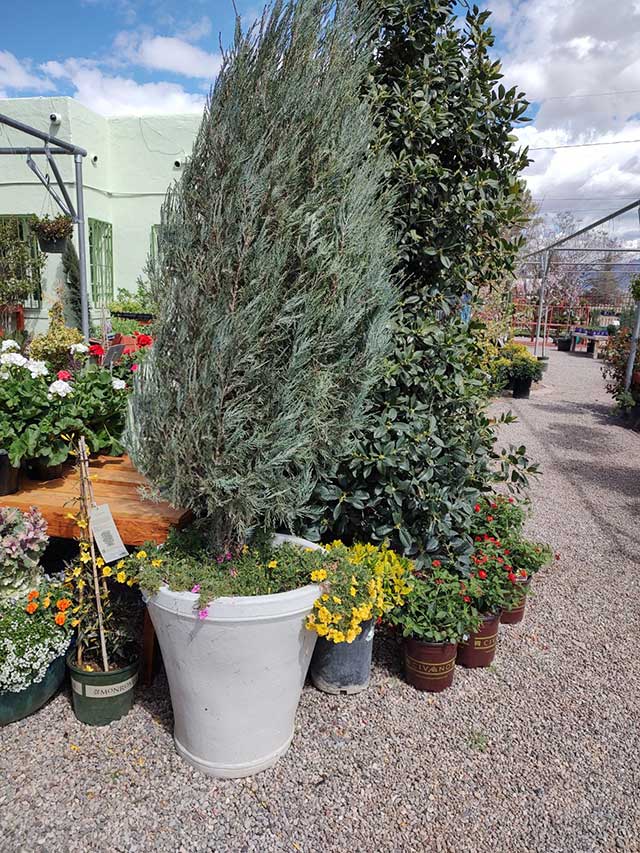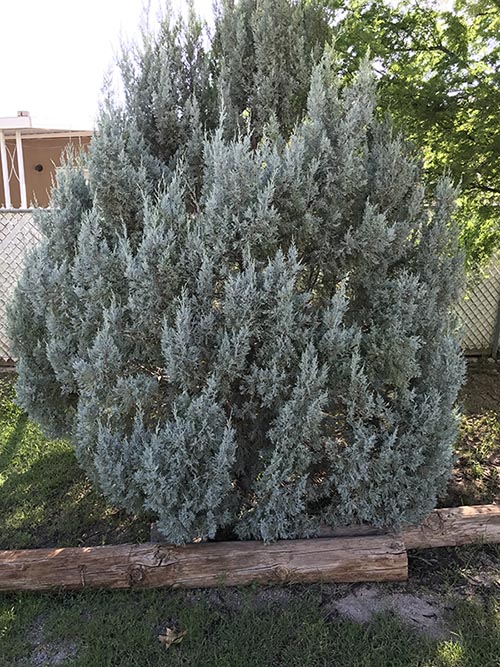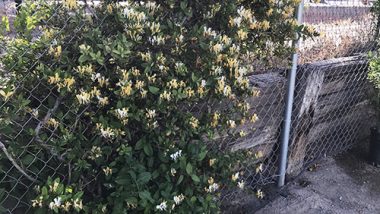Last updated on December 5th, 2024 at 09:47 am
The Wichita Blue Juniper (Juniperus scopulorum). An evergreen conifer that does very well around the Southwest. It is drought-tolerant and requires very little maintenance. It does not produce berries or cones which means very little maintenance or pruning.
It grows to about 15. ft tall sometimes up to 30 ft. within time and 8 ft. wide. It makes a good privacy border wall. It retains its bluish-tinge color all year-long. Water consistently the first 2-3 years after planting. Then cut back to about once per week during the hot summer months.
Furthermore, they do well in a large pot. It is important to note when in a container it needs more water during the hot mid-summer months. The container should be at least 24″ wide or wider if it is a bigger tree.

If you are looking for a good-looking border tree that will screen out traffic or intrusive neighbors this tree will do the job. Plant 3-4 in a row for a great natural landscape effect. This tree came from the Rocky Mountain Juniper. The Wichita Blue Juniper can be grown in USDA zones 3-8.
The bright silver-blue foliage retains its brilliant color year-round.
Wichita Blue Juniper
Insect problems
It is susceptible to spider mites and we recommend spraying with a mite control insecticide at the first sight of these insects. You can also spray the tree with plain water from the top down to remove these insects. Use a good spray nozzle to remove mites and old foliage. Spider mites look like brown spider webbing usually around the bottom of the tree. Spider mites love all pines, cypress, and juniper plants and thrive in dry hot conditions. Borers and bagworms do attack this tree but this is rare around the southwest. A good systemic insecticide will kill these pests.
Organic Insecticides
You can use Neem oil to kill mites and aphids. Neem oil is derived from the berries of Pyrethrum and is also an organic insecticide. It is derived from the Mum flower (Chrysanthemum). Do NOT confuse them with the following Pyrethroids and Permethrin as these are toxic to humans. Pyrethrins are toxic to insects and not to humans. However, it is toxic to fish and amphibians.
Another product to use is horticulture oil this will not kill insects but it does smother the insect larvae thus keeping it from hatching. It is best to apply this during the early spring. In the southwest, it is usually around early March.
Below is what spider mite damage does to an Italian Cypress. Read more about spider mite damage to plants right here. Spider Mite Damage.
Most local nurseries will have this tree available during the spring and summer seasons.

Conclusion: This tree is a good evergreen tree for the southwest. It grows fast and becomes drought tolerant after its third season in the ground. Please share this post with your friends. If you have questions comment below. Wichita Blue Juniper

Greenhouse Manager, Master Gardener, and Webmaster.
If you have any questions or enjoyed this post, feel free to share your thoughts in the comments below.




